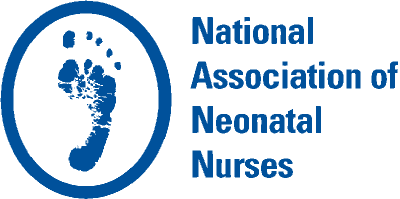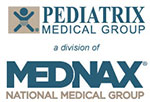Special Interest Section
Welcome to the newest NANN E-News section. In each issue, one of NANN’s special interest groups will share information in their area of focus.
Fostering Partnerships Between Academia and the Healthcare System
Amy Jnah, NNP, Faculty SIG facilitator
Mentoring relationships, underpinned by Bandura’s (1986) social cognitive theory, promote self-efficacy among advanced practice nursing students and actively practicing clinicians. These relationships require self-selection, time, commitment and reciprocal trust, encouragement, stability, and hope. All stakeholders (healthcare system, students, preceptors, and neonates and their families) benefit from students and clinicians engaging in a professional mentoring relationship.
We know that followers (i.e., student-learners, nonadministrators) have four basic needs they seek from leaders (i.e., teachers, administrators): trust, compassion, stability, and hope (Rath & Conchie, 2008). The nursing literature concurs. Pilcher (2012) reported trust as critical to a nurse’s role transition. Lee and Fitzgerald (2008) concluded that learners appreciate a compassionate teacher. Horton (2003) and Sawatzky and Enns (2009) concluded that support is crucial to successful socialization into the advanced practice nurse role. Hayes (1998) and Jnah and Robinson (2015) concluded that stability between preceptors and students optimizes professional role transition among novice neonatal nurse practitioners (NNP).
Hayes (1998), Neal (2008), and Jnah and Robinson (2015) also concluded that mentorships are positively correlated with increased self-efficacy. According to Hayes (1997), Neal, and Jnah and Robinson, both the length of time that a student is paired with a preceptor and the preceptor’s years of experience contribute to the emergence (or lack thereof) of a mentorship. In fact, NNP student perceptions of mentoring behaviors from preceptors increased as they spent more time together (ρ = .404, p = .011; Jnah & Robinson (2015)). Jnah and Robinson (2015) also identified a complementary finding in that the self-selection of a preceptor, student, or both resulted in increased self-efficacy and self-confidence among NNP graduates. Positive self-efficacy correlates with increased professional success, higher earnings potentials, optimized health, and job satisfaction—for new graduates and practicing clinicians (Hayes, 2005; Hill & Sawatzky, 2011; Rath & Conchie, 2008).
A transition to self-selected, dedicated matches between preceptors and students that mimics earlier matching models used with first-generation NNP programs could benefit the greater NNP profession. The match can enhance partnerships between academia and the healthcare system, increasing teamwork, communication, and sharing of ideas. This can positively influence curricular development, which further prepares students for clinical learning experiences and decreases the teaching burden imposed upon some clinical preceptors. The match also can increase a practicing NNP’s commitment toward the teaching coaching role. Some practicing clinicians may garner interest in the academic role and join the ranks of faculty, further narrowing the gap between the classroom and the ever-changing healthcare system. For students, the match program has the potential to foster a feeling of belonging, despite the reality of stepping into an unknown hospital unit and working alongside unfamiliar faces. In this way, students have the potential to thrive cognitively, behaviorally, and socially. This can mitigate anxiety and optimize the learning experience.
Mentoring relationships between preceptors and students must be facilitated, beginning with graduate-level APN education. To shift the tide, convene quality improvement teams to develop collaborative practice guidelines for use between academia and community partners. Use this customizable collaborative practice template and adjust it to the needs of each academic healthcare partner. Take this guideline and engage in open conversations with academic or clinical partners, identify mechanisms to optimize the teaching-learning environment, and recognize those who exemplify the role of mentor.
References
Bandura, A. (1986). Social foundations of thought and action: A social cognitive theory. Englewood Cliffs, NJ: Prentice-Hall.
Hayes, E. (1998). Mentoring and nurse practitioner student self-efficacy. Western Journal of Nursing Research, 20(5), 521–535. doi: 10.1177/019394599802000502
Hayes, E. F. (2005). Approaches to mentoring: How to mentor and be mentored. Journal of the Academy of Nurse Practitioners, 17(11), 442–445.
Horton, B. J. (2003). The importance of mentoring in recruiting and retaining junior faculty. AANA Journal, 71(3), 189–195.
Jnah, A., & Robinson, C. (2015). Mentoring and self-efficacy: Implications for the neonatal nurse practitioner workforce. Advances in Neonatal Care, 15(5), e3–e11.
Lee, G. A., & Fitzgerald, L. (2008). A clinical internship model for the nurse practitioner programme. Nurse Education in Practice, 8, 397–404.
Pilcher, J. (2012). Toolkit for NICU nurse preceptors. Neonatal Network, 31(1), 39–44. doi: 10.1891/0730-0832.21.1.39
Rath, T., & Conchie, B. (2002). Strengths-based leadership: Great leaders, teams, and why people follow. New York, NY: Gallup.
Sawatzky, J., & Enns, C. L. (2009). A mentoring needs assessment: Validating mentorship in nursing education. Journal of Professional Nursing, 25(3), 145–150. doi: 10.1016/j/profnurs.2009.01.003


